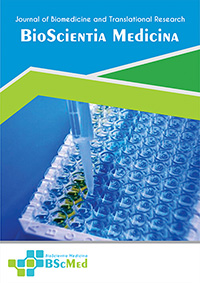Main Article Content
Abstract
Background: Breast cancer remains a significant health challenge, with HER2-negative subtypes representing a majority of cases. Ki-67, a marker of cell proliferation, has emerged as a potential prognostic factor in various cancers, including breast cancer. This study aimed to evaluate the association of Ki-67 expression and HER2-negative status with tumor characteristics, treatment response, and disease progression in breast cancer patients.
Methods: A retrospective cross-sectional study was conducted at Dr. Kariadi General Hospital, Semarang, Indonesia. Data from 94 patients diagnosed with breast cancer were collected, including immunohistochemical profiles, HER2 status, Ki-67 index, treatment regimens, and tumor size. Statistical analysis was performed using SPSS version 25.0 for Windows.
Results: The majority of patients (50%) presented with Luminal B-type breast cancer, and 77.7% had a Ki-67 index >20%. HER2-negative status was observed in 78.7% of patients. No significant correlation was found between HER2-negative status and the type of therapy given (p=0.131) or tumor size (p=0.467). Similarly, Ki-67 expression >20% did not correlate significantly with the type of therapy (p=0.070) or tumor size (p=0.156).
Conclusion: While Ki-67 and HER2-negative status are recognized as important prognostic factors in breast cancer, this study did not find a significant association with treatment modalities or tumor size in the studied population. Further research with a larger sample size and longer follow-up is needed to validate these findings and explore the complex interplay of Ki-67, HER2 status, and other clinical variables in breast cancer progression.
Keywords
Article Details
As our aim is to disseminate original research article, hence the publishing right is a necessary one. The publishing right is needed in order to reach the agreement between the author and publisher. As the journal is fully open access, the authors will sign an exclusive license agreement.
The authors have the right to:
- Share their article in the same ways permitted to third parties under the relevant user license.
- Retain copyright, patent, trademark and other intellectual property rights including research data.
- Proper attribution and credit for the published work.
For the open access article, the publisher is granted to the following right.
- The non-exclusive right to publish the article and grant right to others.
- For the published article, the publisher applied for the Creative Commons Attribution-NonCommercial-ShareAlike 4.0 International License.





